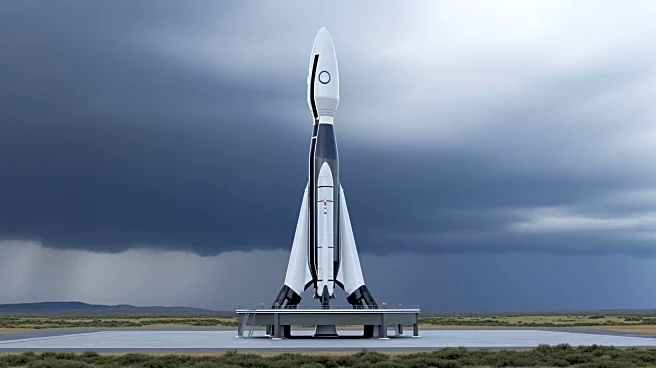What's Happening?
The sun has unleashed a powerful X5.1-class solar flare from sunspot AR4274, marking the strongest solar flare of 2025. This eruption occurred at 5 a.m. EST and has resulted in significant radio blackouts across Africa and Europe, disrupting high-frequency
radio communications. The flare is part of a series of intense solar activities from AR4274, which has been active in recent days, producing other flares accompanied by coronal mass ejections (CMEs). Scientists are currently analyzing coronagraph data to determine if the CME is heading directly towards Earth, which could trigger geomagnetic storm conditions and auroras.
Why It's Important?
The solar flare's impact on radio communications highlights the vulnerability of technological systems to space weather events. Disruptions in radio signals can affect various sectors, including aviation, maritime, and emergency services, which rely on high-frequency communications. The potential geomagnetic storms could also impact power grids and satellite operations, posing risks to infrastructure and services. Understanding and predicting solar activity is crucial for mitigating these impacts and ensuring the resilience of technological systems against space weather phenomena.
What's Next?
Scientists will continue to monitor the situation to assess the potential impact of the CME on Earth. If the CME is confirmed to be Earth-directed, it could lead to geomagnetic storms, affecting power grids and satellite operations. Stakeholders in affected industries may need to implement contingency plans to mitigate disruptions. The ongoing solar activity from AR4274 suggests that further flares and CMEs could occur, necessitating continued vigilance and preparedness from space weather monitoring agencies.
Beyond the Headlines
The increased solar activity from sunspot AR4274 is part of Solar Cycle 25, which has seen a rise in solar phenomena. This cycle's activity could have long-term implications for space weather forecasting and the development of technologies to protect against solar impacts. The event underscores the importance of international collaboration in space weather monitoring and response, as solar flares can have global consequences.
















